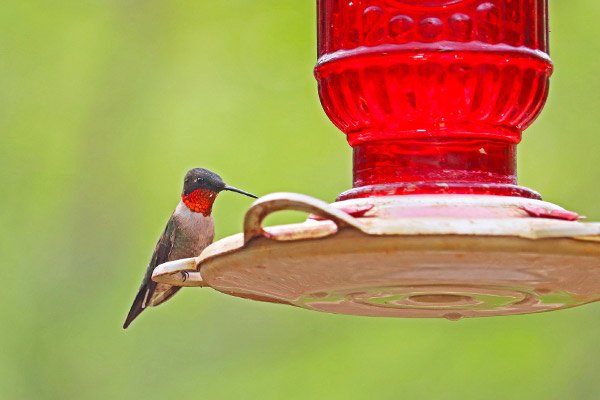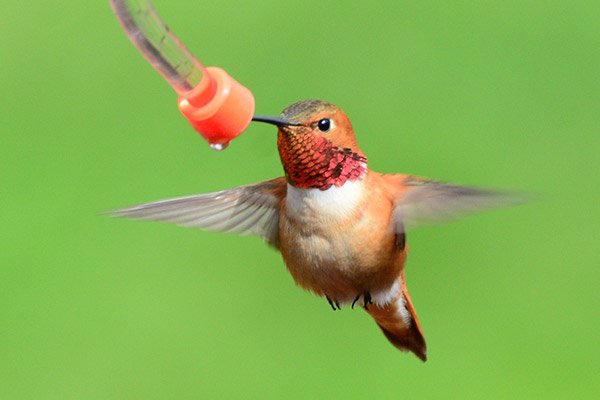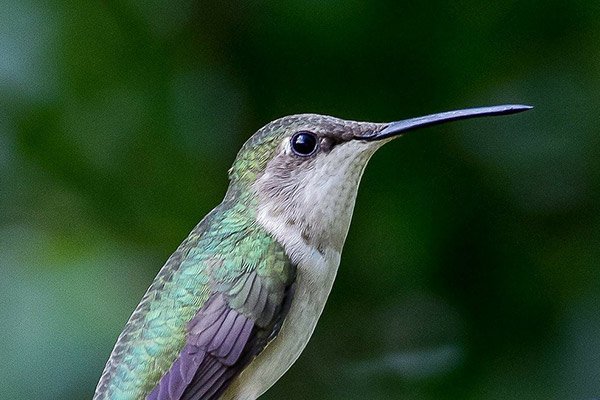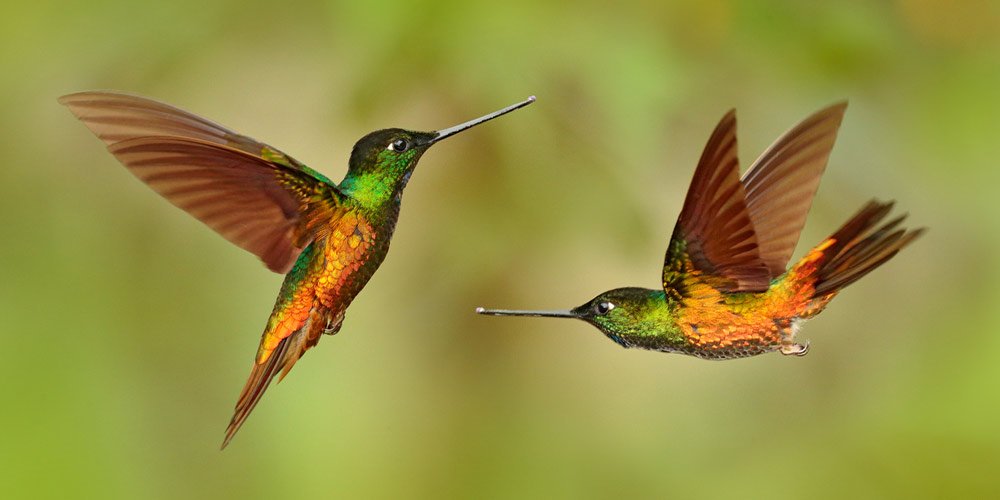Contents
- You are going to love watching a live hummingbird cam!
If you are like me, you love watching birds. And, watching hummingbirds is really cool! But you might not have them in your own backyard.
That’s ok, we’ve got you covered. Here you can view live hummingbird cam streams on this page or with the links I provide.
What do I mean?
We’ve compiled a wide variety of live stream cams on the Internet right here!
Now:
You are going to love watching a live hummingbird cam!
Please note that some of the live cameras below may be off-line, depending on the owner and the time of year. In the case that the live stream may be off, I included a link to the youtube channel so you can see the actual live cam feed in real-time there.
Please help me maintain the quality of this page by letting me know if you notice any of the links here that need to be fixed. Or, if you have suggestions on other cams to add here. Please shoot me an email with your comments for updating this page. Click here to email me.
Now,
let’s get to the live streams…
Live Hummingbird Feeder Cam In Studio City, CA
Carole is the owner of this live cam and she has been consistently feeding hummingbirds for 9 years at her home in Studio City, California, USA. Click here to view her Hummingbird Spot YouTube channel.
Turns out…
Carole is on a quest to photograph every single species on the planet! What a huge undertaking! There are over 350 types and as of this publication, she has photographed approximately 150!
Please support Carole’s endeavors and support the maintenance of this camera by submitting any amount of a donation to her PayPal: https://streamlabs.com/hummingbirdspot
Interesting Facts About Hummingbirds
- They are native to the Americas and belong to the biological family names Trochilidae. Hummingbirds are the smallest bird. You’ll find them ranging in size between 3 and 5″ in length and they weigh less than 2.0 g.
- They conserve energy when food is scarce by going into torpor. Torpor is similar to hibernation. When they go into torpor, they slow their metabolic rate to 1/15th of its normal rate.
- Hummingbirds are the only birds that can fly backward.
- These birds do not have a sense of smell. They cannot smell feeders. However, they do have good color vision.
- They are the smallest birds that migrate. However, they do not migrate in flocks and travel alone for up to 500 miles at a time.
West Texas Hummingbird Feeders
Click here to check out their YouTube channel.
The location of these hummingbird feeders is in the mountains outside Fort Davis, Texas, at an elevation of over 5500 feet. This location has 30 hummingbird feeders and has been known to attract hundreds of hummingbirds from a dozen varieties that are migrating through the arid mountains, making this an awesome camera to watch.
But wait, let me tell you something:
West Texas Avian Research has been working on banding hummingbirds for research purposes for over 10 years. They are doing this to study the status and distribution of hummingbirds throughout the region.
Hummingbird FAQs
- How much sugar water do they drink in a day? – They can consume up to double their body weight in a day.
- Are hummingbirds loners? – They live very solitary lives and are not very social at all.
- Do hummingbirds return to the same nest every year? – They make their nests from very delicate materials, such as sticks and cobwebs. Due to the nest’s fragility, they often last past a single breeding season. It is highly unlikely that they will nest in the same spot as before.
- Is it OK to feed hummingbirds sugar water? – Cane sugar, without red food coloring, is highly recommended.
- Where does a hummingbird nest? You will find a hummingbird nest in a shrub or tree. And, good luck trying to find a hummingbird nest! They are very difficult to locate.
Hummingbirds in Southern California
This live hummingbird cam is brought to you by Explore Birds Bats Bees and you can check out their YouTube channel here.
How to Attract Hummingbirds To Your Yard
There is nothing quite as spectacular as when you have hummingbirds visiting your yard. These fascinating creatures are quite beautiful and interesting to watch.
And the Good news?
Using great binoculars, you can really get to see them up close!
To make sure that your yard is set up properly, use the following tips:
- Serve Sweetened Water That You Made At Home: Combine 4 parts hot water to 1 part sugar. Make sure that it dissolves. Once it is room temperature, it’s ready to serve. Change it out every few days.
- Plant Flowers That Are Hummingbird-Friendly: If you want to attract more to your yard, then make sure that you are growing the plants that they like the most. They are drawn to red flowers or those that have a similar hue.
- Watch Out For Bees & Other Pests: Many other critters are drawn to sugar water as well. For example, bees, ants, and wasps love it too. You can use a nectar guard, choose feeders that are red in color, or use an ant moat.
- Keep The Peace: They can be territorial and may chase others away. You can strategically place other bird feeders in your yard that aren’t visible by the other ones.
- Keep Your Feeders Clean: Make sure to clean your feeders to promote good health. You can use a toothbrush to clean the crevices. Be sure to rinse well.
- Don’t Forget The Protein: Hummers also need protein to survive. You can place a few pieces of overripened banana in a mesh bag, attracting fruit flies. Be sure to throw away the bag once your hummingbirds have had enough.
Watch The Hummingbird Trees
Both Anna’s and Allen’s hummingbirds have nested in these rose trees since 2003. Each season females build three to four nests about the size of walnuts.
Did you know?
Two tiny white eggs, a bit bigger than tic-tacs are incubated for approximately 15 to 18 days before hatching. The tiny chicks are fed a slurry mixture of bugs, tiny spiders, and nectar which help them to blossom into beautiful juvenile hummingbirds who fledge between 23 – 26 days after hatching.
Click here to view on this YouTube channel.
How To Identify A Hummingbird
When hummingbirds visit your yard, it is an experience like no other. It is fun to identify what type it is. However, you will need to be patient to accomplish this.
In case you might be asking yourself…
Using a spotting scope with a camera is an awesome way to capture the perfect picture of hummers in your backyard.
When you want to identify a bird, I always recommend that you start at the top and work your way down towards the back of the tail. This will allow you to detect any field markings. Like most American bird species, the top or front half of a bird is where you’ll find key field marks.
Location
Location is key when identifying birds. The ruby-throated hummingbird spends the warmer months in the eastern portion of the United States.

However, in the Western part of the U.S., there are numerous varieties. For example, Rufous Hummingbirds can be found from southern Alaska, British Columbia and the Pacific Northwest to Northern California.

To determine what varieties are found in your area, it is best to check a range map.
During the colder months, such as fall and winter, a stray one can pop up just about anywhere. Therefore, be sure to keep this in mind.
Sexually Dimorphic
All hummingbird species are considered sexually dimorphic, meaning that the male and female look quite different from the other. As with most bird types, the males are far more colorful than the females. You will especially notice the male’s gorget. To identify which type is visiting your feeder, be sure to find out what types of hummingbird species are common in your area.
Male gorgets are the iridescent feathers that are located on the male’s neck. These feathers get their color through the reflection of sunlight. Without this reflection, they may look dark to your eyes. Therefore, take a few minutes to watch them. To identify the type in your area, you will need to note the color and the particular placement of the color on the hummingbird’s throat or head.
Juvenile hummers (born in the same nesting season as you are seeing them) are challenging to identify. They have not developed many of the field marks that distinguish them.
Overall Impression
When looking at a hummingbird, be sure to take note of its general impression. Look at its size and shape. For example, is it larger or smaller than the other ones? What are its proportions from the bill, tail, and body? Does it display any unique behavioral traits such as tail flicking or distinguishable vocalizations? Is it aggressive? These clues can certainly help you identify your mystery hummingbird.
Bill Color, Length, And Shape
Most North American hummingbirds have bills that are black and straight. A few have longer bills that are curved. Others have two-toned bills that are red and orange with a tip that is black in color. While I don’t suggest using a bill as the first field mark to look for, a colored bill is certainly a clue that should be taken into account.

Tails: Color And Shape
As you look for field marks from the top down to its tail, be sure to look at the tail’s shape and size. Take note of the white coloring on the tail feather tips.
- Rufous Tails: Rufous, Allen’s, and Buff-bellied hummingbirds
- Notched Tails: Violet-crowned, Broad-billed hummingbirds, and Lucifers
Also, be sure to notice if your mystery hummingbird pumps its tail or if it keeps it still. For example, some hummingbirds, such as the Black-chinned varieties, have a tendency to pump their tails when they hover. However, the similar-looking ruby-throated hummingbirds keep their tails still while hovering. There are other subtle field marks that the tail can give away. Basically, don’t stop looking until you reach the end of the tail.
Vocalizations
Hummingbirds are notoriously vocal. Most of them use chip notes or call notes. However, some hummers, like Anna’s hummingbird, will sing a song from a perch that they consider their territory. Hummers also produce sound, such as ringing buzz sounds or a high trill, with their wings.
Abnormalities
Another aspect that you should take into account is the fact that pollen discoloration can occur, possibly throwing you off from identifying your mystery hummer. Hummingbirds serve as a vital aspect of distributing pollen from one plant to another. Therefore, you may see pollen from the plant that the hummer just visited. If you don’t know what kind is in your yard, then it is probably not a new species of hummer. However, it may be a new species for you, which is great! Since you can’t name it after yourself, you can just name it after me. 🙂

